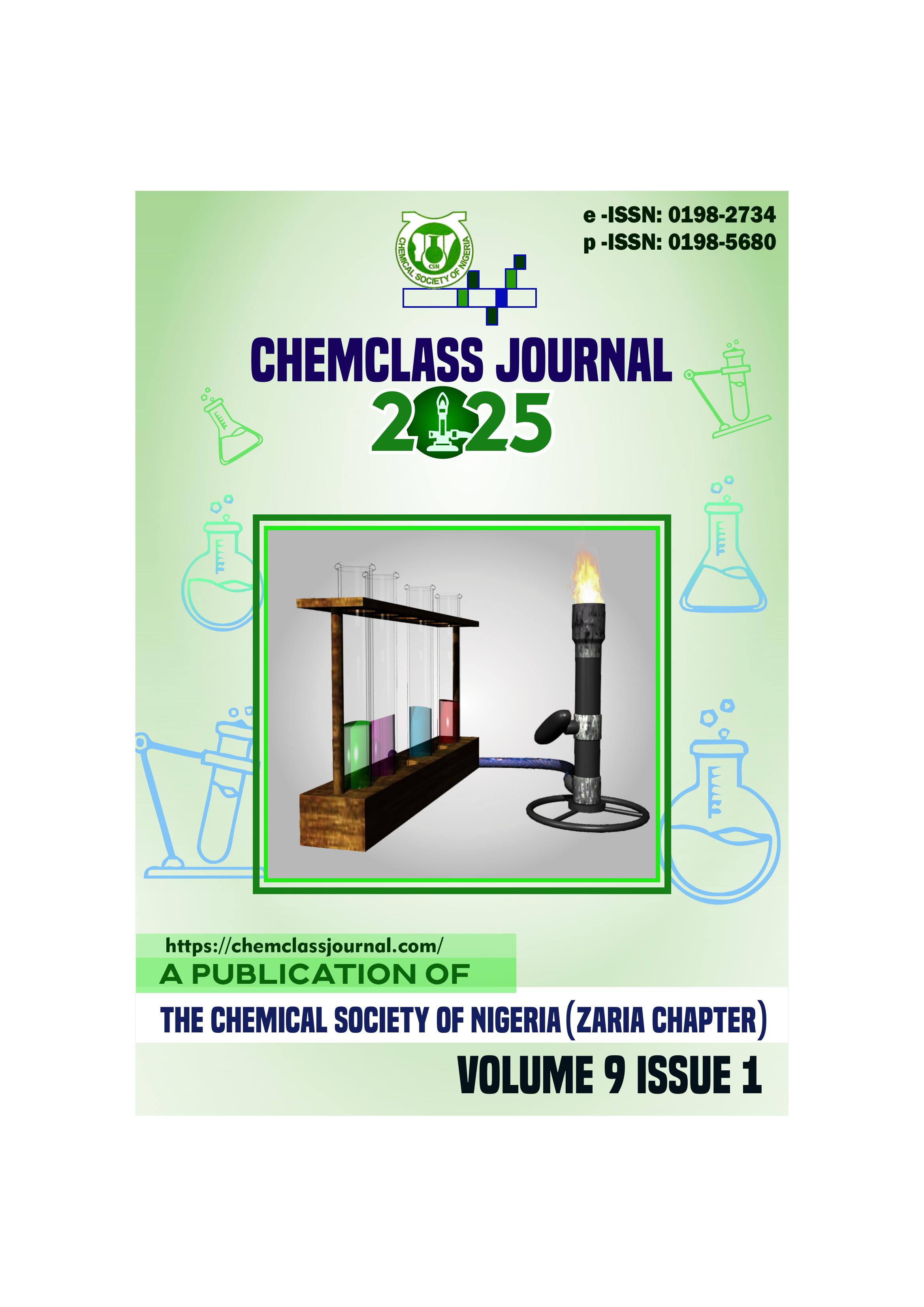Kinetics and Mechanism of the Reduction of Potassium Trisoxalatoferrate (III) by 5-Sulfosalicylic Acid in Aqueous Hydrochloric Acid Medium
DOI:
https://doi.org/10.33003/Keywords:
acrylamide , ionic-strength, kinetics mechanism , outer-sphere , potassium trisoxalatoferrate (III) sulfosalicylic acidAbstract
The reaction between iron (III) complexes and sulfosalicylic acid (SSH) is very important in waste water treatment, detecting the presence of phenols in pharmaceuticals and the pulp and paper industry. In this study, the kinetics and mechanism of the oxidation-reduction reaction between sulfosalicylic (SSH) acid and potassium trisoxalatoferrate(III), K3[Fe(C2O4)3] has been carried out in aqueous acidic medium spectrophotometically under pseudo first-order conditions. The stoichiometric studies obtained by the mole
ratio method, showed that 1 mole of SSH was oxidized for every 2 moles of Fe(C2O4)33- reduced. Under pseudo-first order conditions of SSH >> Fe(C2O4)33-, the reaction was found to have first order dependence
on each of the reactants, giving second order overall. The experimental data are consistent with the rate law:
with a = 9.0 × 10-3 dm3 mol-1s-1
and b = 4.0 × 10-2 dm6 mol-2s-1 at 420 nm and 29.0 ± 1.0 ºC.
The reaction rate was found to be directly dependent on acid concentration and decreased with increase in
ionic strength of reaction system. It was also evident that decrease in dielectric constant of the reaction
medium (D) enhanced the reaction rate and addition of added ions showed negative catalysis on the rate of
the reaction. The reduction of potassium trisoxalatoferrate (III) is by sulfosalicylic acid is strongly
rationalized in terms of absence of ion pair complex formation, free radical participation with outer-sphere
reaction pathway characteristics.





 ChemClass Journal
ChemClass Journal
